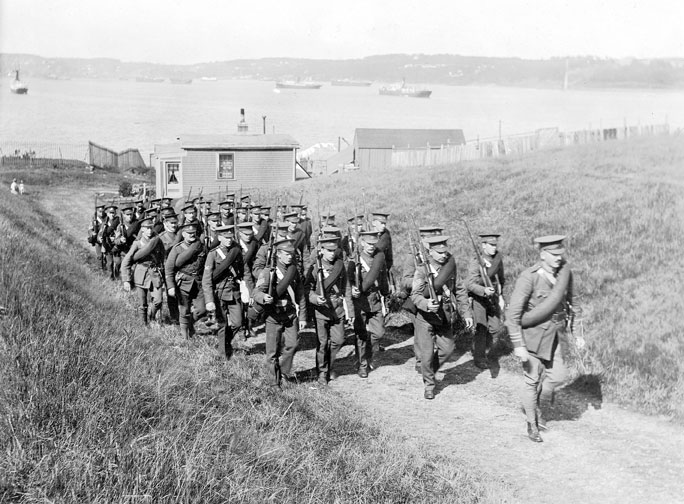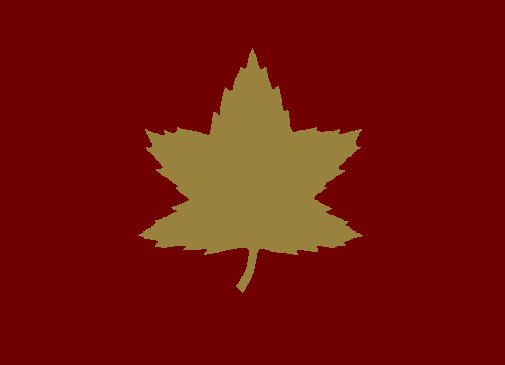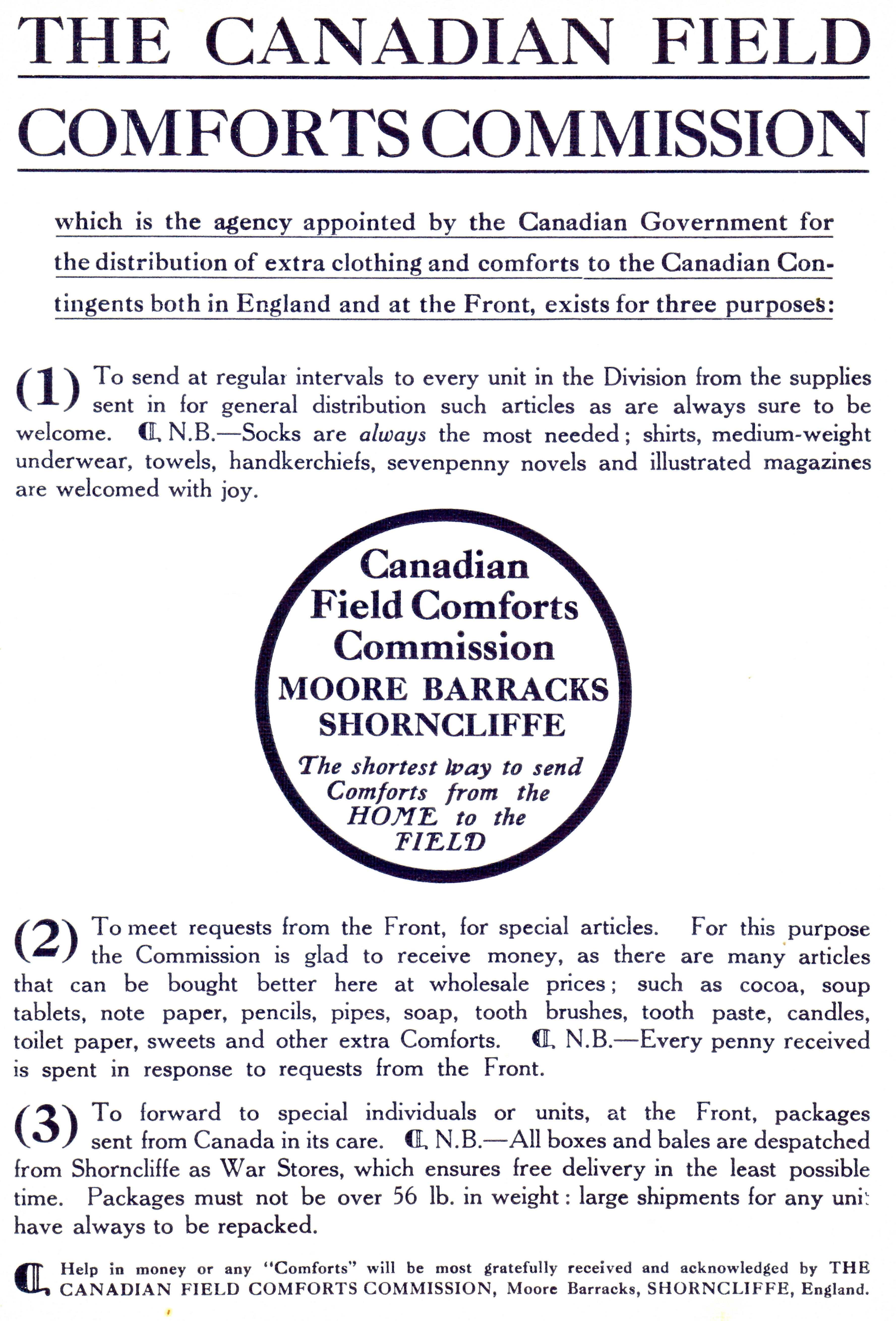|
56th Field Regiment (Dufferin And Haldimand Rifles), RCA
The 56th Field Artillery Regiment, Royal Canadian Artillery is a Canadian Army Reserve artillery regiment based in Brantford, Ontario. The regiment is currently part of 4th Canadian Division's 32 Canadian Brigade Group.http://www.army.forces.gc.ca/land-terre/units-unites/unit-unite-eng.asp?id=200 accessed 14 February 2012 The 56th Field Regiment, RCA, parades at the Sgt William Merrifield VC Armoury, at 18 Brant Avenue, Brantford, Ontario. Allocated Batteries *10th Field Battery, RCA (St Catharines) *54th Field Battery, RCA (Brantford) *69th Field Battery, RCA (Simcoe) Canadian Forces Publication A-DH-267-003 Insignia and Lineages of the Canadian Forces. Volume 3: Combat Arms Regiments. Lineage 56th Field Artillery Regiment, RCA *Originated 28 September 1866 in York, Ontario on as the 37th "Haldimand Battalion of Rifles" *Redesignated 8 May 1900 as the 37th Regiment "Haldimand Rifles" *Redesignated 1 May 1920 as The Haldimand Rifles *Amalgamated 15 December 1936 with The Du ... [...More Info...] [...Related Items...] OR: [Wikipedia] [Google] [Baidu] |
Canada
Canada is a country in North America. Its Provinces and territories of Canada, ten provinces and three territories extend from the Atlantic Ocean to the Pacific Ocean and northward into the Arctic Ocean, making it the world's List of countries and dependencies by area, second-largest country by total area, with the List of countries by length of coastline, world's longest coastline. Its Canada–United States border, border with the United States is the world's longest international land border. The country is characterized by a wide range of both Temperature in Canada, meteorologic and Geography of Canada, geological regions. With Population of Canada, a population of over 41million people, it has widely varying population densities, with the majority residing in List of the largest population centres in Canada, urban areas and large areas of the country being sparsely populated. Canada's capital is Ottawa and List of census metropolitan areas and agglomerations in Canada, ... [...More Info...] [...Related Items...] OR: [Wikipedia] [Google] [Baidu] |
114th Battalion (Haldimand), CEF
The 114th Battalion (Haldimand), CEF, also known as "Brock's Rangers," was an infantry battalion of the Great War Canadian Expeditionary Force. The 114th Battalion was authorized on 22 December 1915 and embarked for Britain on 31 October 1916 where, on 11 November 1916, its personnel were absorbed by the 35th and 36th Reserve Battalions, CEF, to provide reinforcements for the Canadian Corps in the field. The battalion disbanded on 21 May 1917.Canadian Forces Publication A-DH-267-003 Insignia and Lineages of the Canadian Forces. Volume 3: Combat Arms Regiments. The 114th Battalion advertised itself as "the Indian Unit" during active recruiting and in the media, and several other battalions transferred their Indigenous Canadian recruits to the 114th. (For example, Oliver Milton Martin served in this unit.) The battalion recruited in Haldimand County and the Six Nations reserve, and was mobilized at Cayuga, Ontario.Meek, John F. ''Over the Top! The Canadian Infantry in the First Wo ... [...More Info...] [...Related Items...] OR: [Wikipedia] [Google] [Baidu] |
Field Artillery Regiments Of Canada
Field may refer to: Expanses of open ground * Field (agriculture), an area of land used for agricultural purposes * Airfield, an aerodrome that lacks the infrastructure of an airport * Battlefield * Lawn, an area of mowed grass * Meadow, a grassland that is either natural or allowed to grow unmowed and ungrazed * Playing field, used for sports or games Arts and media * In decorative art, the main area of a decorated zone, often contained within a border, often the background for motifs ** Field (heraldry), the background of a shield ** In flag terminology, the background of a flag * ''FIELD'' (magazine), a literary magazine published by Oberlin College in Oberlin, Ohio * ''Field'' (sculpture), by Anthony Gormley Organizations * Field department, the division of a political campaign tasked with organizing local volunteers and directly contacting voters * Field Enterprises, a defunct private holding company ** Field Communications, a division of Field Enterprises * Field Museu ... [...More Info...] [...Related Items...] OR: [Wikipedia] [Google] [Baidu] |
Royal Canadian Artillery
The Royal Regiment of Canadian Artillery () is the artillery personnel branch of the Canadian Army. History Many of the units and batteries of the Royal Regiment of Canadian Artillery are older than the Dominion of Canada itself. The first artillery company in Canada was formed in the province of Canada (New France) in 1750. Volunteer Canadian artillery batteries existed before 1855 but their history is mostly unknown. Seven batteries of artillery were formed after the passage of the Militia Act of 1855 which allowed Canada to retain a paid military force of 5,000 men. One of the pre-1855 volunteer batteries formed in Saint John, New Brunswick, in 1793 was called the "Loyal Company of Artillery" and exists today as the 3rd Field Artillery Regiment, RCA. After Confederation On 20 October 1871, the first regular Canadian army units were created, in the form of two batteries of garrison artillery; thus, that date is considered the regiment's birthday. "A" Battery in Kingston, ... [...More Info...] [...Related Items...] OR: [Wikipedia] [Google] [Baidu] |
62nd Field Artillery Regiment, RCA
The 62nd Field Artillery Regiment, RCA () is a militia unit of the Canadian Army that has its own military band and is located in Shawinigan, Quebec. It recruits primarily in Shawinigan, Joliette and Victoriaville. Origin Its oldest and most notable subunit is the 81st Field Artillery Battery, which was founded in the Eastern Townships in 1912 and relocated in Shawinigan, Mauricie in 1936. World War II The battery was called to active duty during World War II. Its members were trained in Ontario and the United Kingdom from 1940 to 1944. In 1944-45, the 81st Battery contributed to the Allies' effort in the Normandy Landings, which led to the Liberation of France. Anti-aircraft Unit In 1946-48, members of the Shawinigan-based C Company of the Régiment de Joliette joined those of the 81st Battery to form the 62nd Regiment. From that moment until 1961, the newly formed unit served in an anti-aircraft capacity. Field artillery Since 1961, the regiment has been a field artil ... [...More Info...] [...Related Items...] OR: [Wikipedia] [Google] [Baidu] |
49th Field Artillery Regiment, RCA
49th Field Artillery Regiment, RCA, is a Canadian Forces Primary Reserve regiment based in Sault Ste. Marie, Ontario. The regiment is part of 4th Canadian Division's 33 Canadian Brigade Group. It draws much of its history from the Sault Ste. Marie Regiment, an infantry regiment of the Non-Permanent Active Militia of the Canadian Militia (now the Canadian Army). First organized in 1913 as the 51st Soo Rifles, a rifle regiment, at Sault Ste. Marie, volunteers from the regiment fought in the First World War. It was renamed in 1920 as The Soo Rifles, and for the final time in 1923, as The Sault Ste. Marie Regiment. In 1936, the regiment was amalgamated with A Company of The Algonquin Regiment to form The Sault Ste Marie and Sudbury Regiment. In 1946, the regiment was converted to artillery, and continues to exist today as the 49th Field Artillery Regiment, RCA. History The Sault Ste. Marie and Sudbury Regiment The beginnings of the regiment start in 1802 when a detachment ... [...More Info...] [...Related Items...] OR: [Wikipedia] [Google] [Baidu] |
Oliver Milton Martin
Oliver Milton Martin (1893-1957) was a member of the Kanien'kehá:ka nation from the Six Nations Grand River Reserve, Martin served in the First and Second World Wars, gaining the rank of brigadier and was the highest ranking First Nations person of the Second World War. After leaving the military he was a school teacher, principal and provincial magistrate. Martin was the first Indigenous person to be appointed a provincial magistrate in Ontario. The Royal Canadian Legion Branch #345 in Toronto is named in his honour. Personal life Martin was born on April 9, 1893, in Ohsweken, Ontario. Martin was the son of Robert Martin and Lucinda Lucy Miller. He grew up on the Six Nations of the Grand River Reserve. He had four sisters and two brothers. Martin married Jean "Lillian" Bunt In 1936. Bunt was also a teacher at the Secord School, in East York, Ontario. Military career Martin joined The Haldimand Rifles militia regiment in 1909 in the role of bugler. In 1915 he left his tea ... [...More Info...] [...Related Items...] OR: [Wikipedia] [Google] [Baidu] |
William Merrifield
William Merrifield Victoria Cross, VC, Military Medal, MM (9 October 1890 – 8 August 1943) was an English-born Canada, Canadian recipient of the Victoria Cross (VC), the highest and most prestigious award for gallantry in the face of the enemy that can be awarded to United Kingdom, British and Commonwealth of Nations, Commonwealth forces. A soldier with Canadian Expeditionary Force during the First World War, he was awarded the VC for his actions on 1 October 1918, during the Battle of the Canal du Nord. Earlier in the war he had been awarded the Military Medal. Early life William Merrifield was born at Brentwood, Essex in England on 9 October 1890. He emigrated to Canada for employment, settling in Ottawa. He later moved to Greater Sudbury, Sudbury, where he worked as a fireman on the Canadian Pacific Railway. He also joined the The Algonquin Regiment, 97th Regiment, known as the Algonquin Rifles, a unit of Canada's Canadian Militia, militia. First World War On 23 September 1 ... [...More Info...] [...Related Items...] OR: [Wikipedia] [Google] [Baidu] |
7th Canadian Infantry Division
The 7th Canadian Infantry Division was an infantry division of the Canadian Army, mobilized in the spring of 1942 and assigned for home defence within Atlantic Command, during World War II. At the time it was assumed it would consist of volunteers and proceed overseas. By the summer of 1942 it became obvious that there would not be enough volunteers, so National Resources Mobilization Act (NRMA) conscripts were assigned to the regiments of the Division to bring their numbers up to war establishment strength. This meant that the Division could only be used for home defence, unless the Parliament of Canada The Parliament of Canada () is the Canadian federalism, federal legislature of Canada. The Monarchy of Canada, Crown, along with two chambers: the Senate of Canada, Senate and the House of Commons of Canada, House of Commons, form the Bicameral ... ruled that conscripted men could be sent overseas. Two brigades were assembled in the early fall of 1942 in Camp Debert in ... [...More Info...] [...Related Items...] OR: [Wikipedia] [Google] [Baidu] |
5th Canadian Division
The 5th Canadian Division is a formation of the Canadian Army responsible for the command and mobilization of most army units in the provinces of New Brunswick, Nova Scotia, Prince Edward Island and Newfoundland and Labrador; as well as some units in Kingston, Ontario. The division is recognized by the distinctive maroon patch worn on the sleeve of its soldiers. It was first created as a formation of the Canadian Expeditionary Force during the First World War. It was stood down during the war only to be reactivated through the renaming from '1st Canadian Armoured Division' to the 5th Canadian (Armoured) Division during the Second World War. It was stood down following demobilization and was again reactivated in 2013 with the renaming of the former Land Force Area Atlantic. First World War The 5th Canadian Division of the Canadian Corps was formed during World War I under Major-General Garnet Burk Hughes. The 5th began assembling in United Kingdom, Britain in February, 1917, but ... [...More Info...] [...Related Items...] OR: [Wikipedia] [Google] [Baidu] |
1st Canadian Division
The 1st Canadian Division (French: ) is a joint operational command and control formation based at CFB Kingston, and falls under Canadian Joint Operations Command. It is a high-readiness unit, able to move on very short notice, and is staffed and equipped to meet Canada's military objectives to counter any potential threat. Formed during the First World War in August 1914, the 1st Canadian Division was a formation of the Canadian Expeditionary Force. The division contained a cavalry squadron and a Bicycle infantry, cyclist company, three infantry brigades (the 1st, 2nd and 3rd Canadian Infantry Brigades, each of four battalions), representing all parts of Canada, three field artillery brigades (roughly equivalent to modern regiments) armed with 18-pounders and engineers, together with elements of the Army Service Corps and the Army Medical Corps. The total war establishment of the division was 17,873 all ranks, with 4,943 horses. During its service in the First World War, the di ... [...More Info...] [...Related Items...] OR: [Wikipedia] [Google] [Baidu] |
215th Battalion (2nd Overseas Battalion Of 38th Regiment Dufferin Rifles), CEF
The 215th Battalion (2nd Overseas Battalion of 38th Regiment Dufferin Rifles), CEF was a unit in the Canadian Expeditionary Force during the First World War.Canadian Forces Publication A-DH-267-003 Insignia and Lineages of the Canadian Forces. Volume 3: Combat Arms Regiments. History Based in Brantford, Ontario, the unit began recruiting in early 1916 in the counties of Brant, Norfolk, and Haldimand. After sailing to England in April 1917, the battalion was absorbed into the 2nd Reserve Battalion on May 7, 1917. The 215th Battalion, CEF had two Officer Commanding: Lieut-Col. H. E. Snider and Lieut-Col. H. Cockshutt. Perpetuations In 1920, the perpetuation of the 215th Battalion, CEF was first assigned to The Dufferin Rifles of Canada, and is now held by the 56th Field Artillery Regiment, RCA. * The Dufferin Rifles of Canada (1920-1936) * The Dufferin and Haldimand Rifles of Canada The Dufferin and Haldimand Rifles of Canada was an infantry regiment of the Non-Permanent Ac ... [...More Info...] [...Related Items...] OR: [Wikipedia] [Google] [Baidu] |


